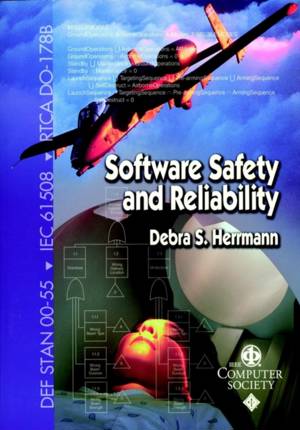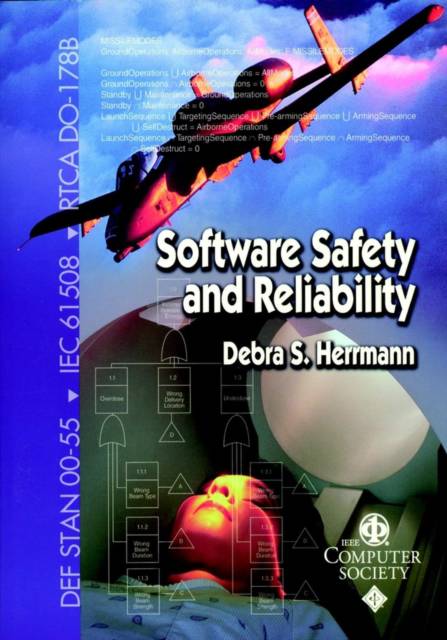
- Afhalen na 1 uur in een winkel met voorraad
- Gratis thuislevering in België vanaf € 30
- Ruim aanbod met 7 miljoen producten
- Afhalen na 1 uur in een winkel met voorraad
- Gratis thuislevering in België vanaf € 30
- Ruim aanbod met 7 miljoen producten
Zoeken
Software Safety Reliability
Techniques, Approaches, and Standards of Key Industrial Sectors
Debra S Herrmann
€ 189,95
+ 379 punten
Omschrijving
The role of software has changed from simply generating financial or mechanical data to monitoring and controlling equipment that directly affects human life and safety. As a result, a more thorough understanding and familiarity with the specialized techniques used to achieve and assess the safety and reliability of software is needed in academia, industry, and government.
This original text introduces the concepts, techniques, and approaches used to achieve and assess software safety and reliability. Debra Herrmann presents a cross-section of current safety and reliability standards that cross multiple industrial sectors while focusing on the additional required activities to achieve software safety and reliability. In organizing this text, the she has three objectives. The first is to raise the reader's awareness on the importance of software safety and reliability and on its role in mission critical systems by presenting many illustrative, ever day examples. The second objective is to provide practical information about the current methods used to achieve and assess software safety and reliability. The final objective is to improve the understanding and practice of software safety and reliability by consolidating the latest research so that it can be compared and analyzed for the future.
The book is written for engineers, scientists, managers, regulators, and policy makers involved in the design, development, acquisition, and certification of safety-critical systems.
This original text introduces the concepts, techniques, and approaches used to achieve and assess software safety and reliability. Debra Herrmann presents a cross-section of current safety and reliability standards that cross multiple industrial sectors while focusing on the additional required activities to achieve software safety and reliability. In organizing this text, the she has three objectives. The first is to raise the reader's awareness on the importance of software safety and reliability and on its role in mission critical systems by presenting many illustrative, ever day examples. The second objective is to provide practical information about the current methods used to achieve and assess software safety and reliability. The final objective is to improve the understanding and practice of software safety and reliability by consolidating the latest research so that it can be compared and analyzed for the future.
The book is written for engineers, scientists, managers, regulators, and policy makers involved in the design, development, acquisition, and certification of safety-critical systems.
Specificaties
Betrokkenen
- Auteur(s):
- Uitgeverij:
Inhoud
- Aantal bladzijden:
- 524
- Taal:
- Engels
- Reeks:
- Reeksnummer:
- nr. 26
Eigenschappen
- Productcode (EAN):
- 9780769502991
- Verschijningsdatum:
- 10/02/2000
- Uitvoering:
- Paperback
- Formaat:
- Trade paperback (VS)
- Afmetingen:
- 180 mm x 252 mm
- Gewicht:
- 907 g

Alleen bij Standaard Boekhandel
+ 379 punten op je klantenkaart van Standaard Boekhandel
Beoordelingen
We publiceren alleen reviews die voldoen aan de voorwaarden voor reviews. Bekijk onze voorwaarden voor reviews.











